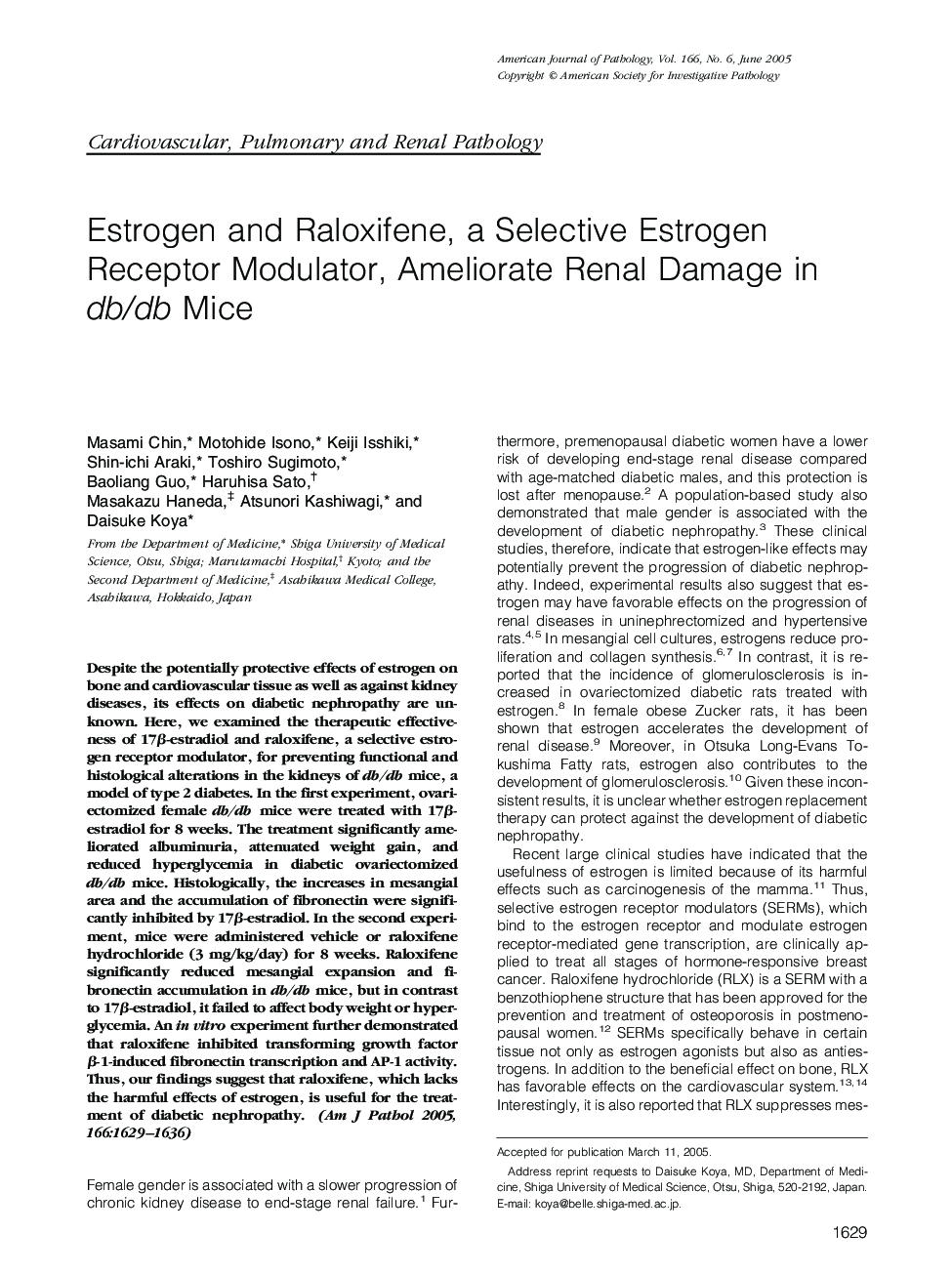| Article ID | Journal | Published Year | Pages | File Type |
|---|---|---|---|---|
| 9943338 | The American Journal of Pathology | 2005 | 8 Pages |
Abstract
Despite the potentially protective effects of estrogen on bone and cardiovascular tissue as well as against kidney diseases, its effects on diabetic nephropathy are unknown. Here, we examined the therapeutic effectiveness of 17β-estradiol and raloxifene, a selective estrogen receptor modulator, for preventing functional and histological alterations in the kidneys of db/db mice, a model of type 2 diabetes. In the first experiment, ovariectomized female db/db mice were treated with 17β-estradiol for 8 weeks. The treatment significantly ameliorated albuminuria, attenuated weight gain, and reduced hyperglycemia in diabetic ovariectomized db/db mice. Histologically, the increases in mesangial area and the accumulation of fibronectin were significantly inhibited by 17β-estradiol. In the second experiment, mice were administered vehicle or raloxifene hydrochloride (3 mg/kg/day) for 8 weeks. Raloxifene significantly reduced mesangial expansion and fibronectin accumulation in db/db mice, but in contrast to 17β-estradiol, it failed to affect body weight or hyperglycemia. An in vitro experiment further demonstrated that raloxifene inhibited transforming growth factor β-1-induced fibronectin transcription and AP-1 activity. Thus, our findings suggest that raloxifene, which lacks the harmful effects of estrogen, is useful for the treatment of diabetic nephropathy.
Related Topics
Health Sciences
Medicine and Dentistry
Cardiology and Cardiovascular Medicine
Authors
Masami Chin, Motohide Isono, Keiji Isshiki, Shin-ichi Araki, Toshiro Sugimoto, Baoliang Guo, Haruhisa Sato, Masakazu Haneda, Atsunori Kashiwagi, Daisuke Koya,
